James Baldwin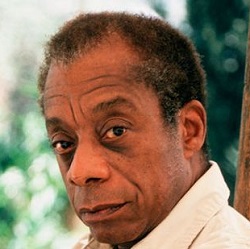
James Arthur Baldwin was an American novelist who wrote fiercely on the social problems prevailing in America and other parts of the world at his time. He wrote various novels, poems, plays and essays, presenting the mirror image of society. He critically opposed the discrimination faced by the black people in the country and raised his voice against the deprivation of black people. The first novel by Baldwin was published in 1953, named 'Go Tell it on the Mountain', which was part of Times magazine's 100 best English language novels published between 1923-2005. He wrote on socially driven topics like masculinity, sex and colour-based discrimination, and class-based discrimination and raised voices for African Americans. Apart from his incredible writing skills, he had outstanding oratory skills that made him recognised as a great orator on socio-political issues. Early Life and FamilyBirth and ChildhoodJames Baldwin was born on 2nd August 1924 in Harlem in New York City. His mother was Emma Berdis Jones, a native of Deal Island of Maryland. She was the victim of racial segregation during the Great Migration period in Southern America. She never discussed with James about his genetic father, and neither James insisted on her much for this. It is claimed that his genetic father was a drug addict, which resulted in his death. Emma took care of James as a single parent for a few years. In 1927, Emma married David Baldwin, a labourer and a Baptist clergyman. David was a native of Louisiana, preached in New Orleans, and in 1919 he moved to Harlem, New York. FamilyJames accepted David's last name as his last name, Baldwin, along with his eight-step brothers and sisters, of whom James was the eldest. The relationship of James with his parents, Emma and David, was average. He has not talked much in public about his mother, but whenever he spoke, he admired her and respected her for raising him after facing many difficulties. The relationship between James and his stepfather was off and on type; there had also been physical fights between them. David was unhappy with James because he had good relations with white people whom his stepfather hated. David Sr. also didn't like James's interest in reading books and watching movies; these issues sometimes created tensions between them. Between the 1920s and 1930s, David became frustrated and used to get angry every time because he lost his labourer's job in a soft drink factory. Due to his anger, the demand for him as a preacher was also reduced. All these incidents had a significant impact on his mind, and then in 1943, he was sent to a mental asylum and then on 29th July of the same year, he died due to TB. It was the same day when his youngest daughter took birth. James met David a day before his death at his mother's request and attended the funeral ceremony with an essay note written by him. James wrote, "in his outrageously demanding and protective way, he loved his children, who were black and menaced like him". The death of James's stepfather brought responsibilities of the Family on his shoulder, as he was the house's eldest son. He faced extreme poverty and discrimination due to race, colour and class. He expressed the pain of him that he felt during that period in one of his books, where he wrote, "I never had a childhood… I did not have any human identity…. I was born dead". These lines show the deprivation he faced during his childhood. EducationJames started his schooling at Public School 24 at the age of five years in Harlem. He was a bright student and supported by his teachers. The principal of his school, Gertrude E. Ayer, encouraged him in research and writing skills; he believed that James had been born with writing skills from his mother. By fifth class, he read famous writing works of Fyodor Dostoyevsky, Harriet Beecher and Charles Dickens. He was very fond of Dickens's writings. By then, he started writing his works, like he wrote a song that was praised by New York Mayor Fiorello La Guardia, who sent him the letter of praise. During his school time, he met Orilla 'Bill' Miller, a white school teacher who was the reason for indulging James in the field of playwriting. This was the first instance that created respect in James's heart toward white people. His stepfather David disagreed with the idea of James entering the theatre as a playwriter, but his mother insisted David support James. Consequently, the first play written by James was played under the direction of Miller. Then James was admitted to Frederick Douglass Junior High School, where he met two most inspirational persons of his life, Herman W. Bill Porter and Countee Cullen. Porter was the advisor of the school's newspaper Douglass Pilot. With the efforts of Porter, the first essay by James was published in 1937 in the school's daily newspaper Douglass Pilot named "Harlem- Then and Now". Countee Cullen was a famous poet who taught James the French language and guided him in his writings. In 1938, James graduated from the Frederick Douglass School. After that, he was admitted to a white people-dominated school named De Witt Clinton High School, Bronx. In this school, too, he continued his literary works, where he and his friends Richard Avedon, Emile Capouya, and Sol Stein all worked for the school's magazine, the Magpie. In 1941, Baldwin had to leave school to earn to support his Family. Life after dropped from school and the start of his literary careerAfter leaving his school, James got his first job at the US army depot in New Jersey. In 1942, his friend Emile Capouya helped him to find another job laying tracks in Belle Mead, New Jersey. In Belle Mead, he faced discrimination and prejudice for being a black race person. This made James poorly frustrated and proved to be the reason for him to immigrate out of America. He was encountered with favouritism several other times, too; in his famous book Note of a Native Son, he mentioned that once at restraint in Princeton, he was told that "coloured boys" were not served here; it was an open incident of favouritism that had humiliating effects on him. Another incident of sheer humiliation due to the discrimination he faced was mentioned in the same book when he, along with his friend, came out of a movie theatre and went to dine. They were denied being served at restraint, and then they went to another restaurant and faced the same thing. This humiliation angered James, and he hurled a water mug at the water, and they escaped from there. 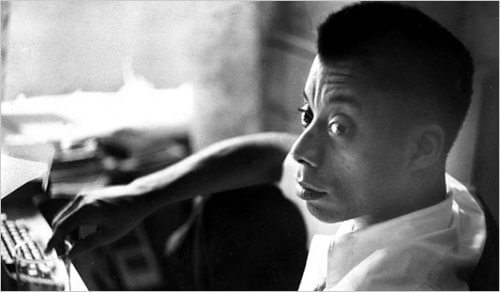
Life after school for James passed between choosing his writing passion and his responsibilities towards his Family. He continued to work different jobs to earn money and provide bread for his Family. When James was in De Witt Clinton, he met Beauford Delaney, who used to live in Greenwich Village; he remained his friend even after he left the school. Despite being a good friend, Delaney was also his mentor, who encouraged him to pursue his career in arts and literature. When the world war broke out, Harlem, where James lived, became economically isolated, and its condition worsened. So, James decided to move to Greenwich Village, where Beauford Delaney used to live. Baldwin started living in Greenwich Village, where he did numerous works to survive. Initially, he started his job at Calypso restaurant under Connie Williams by the approach of Delaney. In 1944, James was introduced to Richard Wright, the publisher of 'Native Son'. James showed his manuscripts of 'Go Tell It On The Mountain', which pleased him a lot, and he was convinced to publish it. But, the Harper & Brothers gave an initial advance of $5oo to James to publish it, which created trouble between James and Wright, and Harpers did not publish the book too. It was a complete mess for James. Later, James tried various times to approach Wright to publish the book, but that didn't work, and the relationship worsened when they met in Paris in 1948. In between all these events, James in his village made various literary contacts like Sol Levites of The New Leader, Randell Jarrell of The Nation, Elliot Cohen and Robert Warshow of Commentary, and Philip Rath of Partisan Review. He used to write reviews in these magazines; his first review was published in The Nation in 1947. Then after a year, his first essay, The Harlem Ghetto, was published in the monthly magazine 'Commentary', which was based on anti-semitism spread among Black Americans. His second essay was 'Journey to Atlanta', published in The New Leader magazine. James referenced Atlanta from the diary collections of his younger stepbrother David, who had gone to Atlanta once. Both essays received a good reaction from the public. In 1948, he moved to Shanks Village in Woodstock, New York. His first fiction work, a short fictional story called "Previous Condition", was published there. Life in FranceIn 1948, James received the Rosenwald Fellowship of $1500 for his literary work. He and one of his photographer friends Theodore Pelatowski started their career on the photograph and essay book 'Unto the Dying Lamb', which was never completed. James was still left with the fellowship amount that supported his desire to move to France. James was willing to move to France, having several reasons behind it. He was fed up with the humiliation he faced in America for being Black. He was grieved by the kind of discrimination and ignominy he and his fellow black people were dealing with in American society. This was the primary reason that persuaded him to move to Paris, France, in search of a peaceful, dignified life. Another reason for moving to Paris was that he didn't want him to be recognised only as a Negro writer whose context of writing is only based on American Black and White people's hustle. He wanted to explore places to have ideas and thought about other world areas. He tried to cover comprehensive aspects of the world in his writing, apart from the mortification faced by Africans-Americans in his home country. Finally, on 11th November 1948, at the age of 24 years, he flew to Paris from New York, leaving his mother and other siblings in the US. He gave most of his fellowship money to his mother, and with a few dollars, he went to Paris. He lived in Paris till 1957, where he stayed at Saint-Germain-des-Pres. James lived there in many hotels and with various friends. During that time, he was familiarised with notable persons like Mason Hoffenberg, Stephen Spender, Max Ernst, Asa Benveniste, George Paul Solomos, Jean-Paul Sartre, and Truman Capote; all were renowned names in the field of arts and literature. The 'Negro in Paris' was the first notable work of James in Paris that was published in 'The Reporter', which was based on the affinity between Black Americans and Black Africans residing in Paris. The subsequent literary work of James in Paris was 'The Preservation of Innocence', which was based on homosexuality. After that, his essay 'Too Little Too Late' was published in Commentary magazine, and his short story 'The Death of the Prophet' was also published. In 1949, James's 'Everybody's Protest Novel' was published, and a year later, in 1951, 'Many Thousands Gone' was published. Both these novels critique Richard Wright's disapproval of social problem novels. These novels have now made him the most promising young Negro writer. In 1953, Beauford Delaney arrived in Paris; that was the heart-touching event in James's life that year as he was one of his closest friends. Around that time in Paris, James's friend circle shifted from white people to Black expatriates of Paris. His friendship grew with Bernard Hassell, Maya Angelou, Richard Gibson, Chester Himes and Howard Swanson. In 1954, he received Guggenheim Fellowships and published a play titled 'Amen Corner'. It was a fictional play featuring a fictionalised character of preacher Sister Margaret. The play premiered in Paris in October 1955. In 1956, James had convinced himself to return to America as he had made quite a good name in Paris as a writer. So, he decided to spend his last year in Paris with full enjoyment. In the same year, he was given a grant recognised by the National Institute of Arts and Literature and then published his novel Giovanni's Room. James's life back in New YorkJames was aware of the incidences of the Civil Rights Movement prevailing in America since 1955. He was informed about the incidents against Black people, like the murder of Emmett Till in Mississippi in August, the arrest of Rosa Parks in December in Montgomery and riots ignited by white people due to the admission of Autherine Lucy. All these occurrences helped James realise he was wasting time in France and should join his side for his Black community. This was his turn to speak against the humiliation he had faced throughout his life, which led him to leave America. So, he decided to fly back to New York in 1957. His role in Civil Rights MovementAfter reaching America, James participated actively in the movement. When he landed in America, the Civil Rights Legislation was under debate in Congress. On his willingness to work in support of the campaign, the Partisan Review editor gave him the duty to report on the incidences of the movement in South America. In South America, James interviewed people in Charlotte and Montgomery. In Charlotte, he got the opportunity to meet Martin Luther King Jr. In response to all the information from such interviews, James wrote two essays, "The Hard King of Courage" in Harper's magazine and "Nobody Knows My Name" in the Partisan Review. Later, he wrote numerous articles on the movement in notable magazines like Harper's, The New York Times Magazine, etc. His essays published in support of the movement were "Down at the Cross", "Letter from a Region of My Mind", and "The Fire Next Time". His next step toward supporting the movement was joining the Congress of Racial Equality (CORE) and the Student Non-violent Coordinating Committee (NSCC). These organisations helped James to travel to South America and explore the prevailing racial discrimination in the region. As a result, he gave various lectures and spread awareness about the movement. He did splendid work after association with the CORE. By 1963, the mainstream media had started recognising James and his literary work. His racial and white ideology was taken seriously by the country's press. The media gave importance to the pain of Negros and his frustration with the government. The Time magazine posted James on the cover of the May edition in 1963, stating, "There is not another writer". His contribution to the movement was crucial, but he never accepted the label of being a civil rights volunteer; instead, he explained his contribution as the duty of every citizen to fight for their civil rights. James continued his social activism and signed the pledge of "Writers and Editors War Tax Protest" in 1968, which resulted in a refusal to pay income tax in protest of the Vietnam War. His Famous Literary Works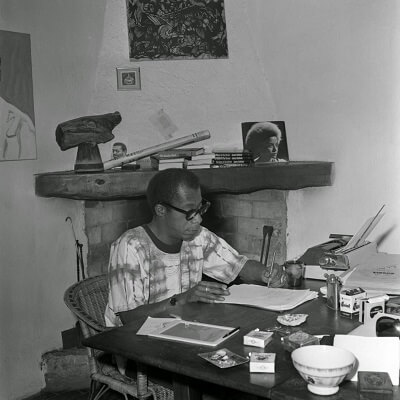
His first official work was published in The Nation, a review of Maxim Gorky's work, in 1947. His first novel was published in 1953, titled Go Tell It To The Mountain. His first essay collection was published in 1955, titled Notes of a Native Son. His second and controversial one, Giovanni's Room, was published in 1956 as it had homosexual content. His third novel, Another Country, was published in 1962 after arriving in America. It also had controversial content like homosexuality and extramarital affairs. His fourth novel was "Tell me how long the train's been gone", Published in 1968. His literary characters were primarily based on homosexuality, gay and bisexuals. His essay collection "Down at the cross", also named 'The Fire Next Time", with its first edition, was published in 1963. Due to this collection, James was featured on the cover of Time Magazine in the 1963 edition. By this launch, James was regarded as the speaker of the Civil Rights Movement and the person whose remarks were taken seriously on the matter of Black people. In 1972, No name in the Street was launched, which stated his experiences of the 1960s and the movement. He used to talk boldly on the matters such as homosexuality, gay, bisexuals, and third gender rights, which were taboo and not given notable importance. His notable works include "If Beale Street Could Talk", published in 1974, and another was "Just Above My Head", written in 1979. Baldwin's RelationshipsBaldwin always advocated issues like homosexuality through his writings which were regarded as taboo or sought of mental illness during that time in America. He was a homosexual. In 1949, he was in love with a Swiss boy named Lucien Happersberger, aged seventeen. Their relationship did not go for long, only after three years, Lucien was married, and Baldwin was left helpless and alone. When Lucien's marriage ended, he again contacted Baldwin and stayed with him till his last time. Baldwin's Last YearsBaldwin returned to Saint-Paul-de-Vence in 1970, after the Civil Rights Movement. He settled here in an old house in the village. His friends used to come here anytime to visit him as it was open to everyone. He devoted his time to writing; he wrote most of his last works from this house. Baldwin had stomach cancer; his friend Fred Nall Hollis and Lucien were with him during his last times. His friend Nall was Baldwin's friend since the 1970s. At the time of his death, Baldwin was working on the manuscripts of a memoir on the experiences of civil rights leaders like Martin Luther King Jr., Malcolm X and Medgar Evers, titled Remember This House. 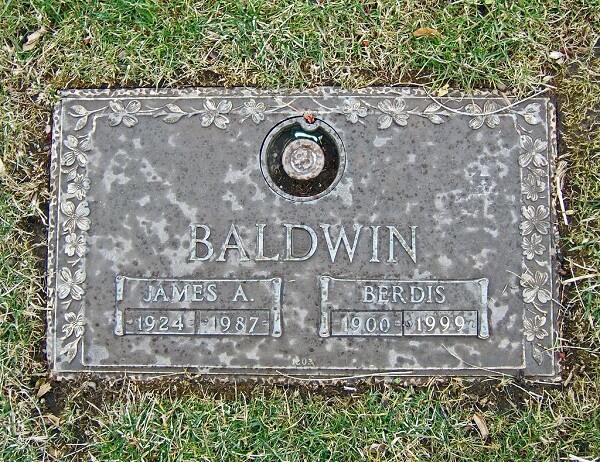
Baldwin died on 1st December 1987 in the Saint-Paul-de-Vence due to stomach cancer. His remains were buried at the Ferncliff Cemetery of Hartsdale, New York City. Baldwin's LegacyEven after the death of James, his fans and authorities remembered him through his literary works and other legacies.
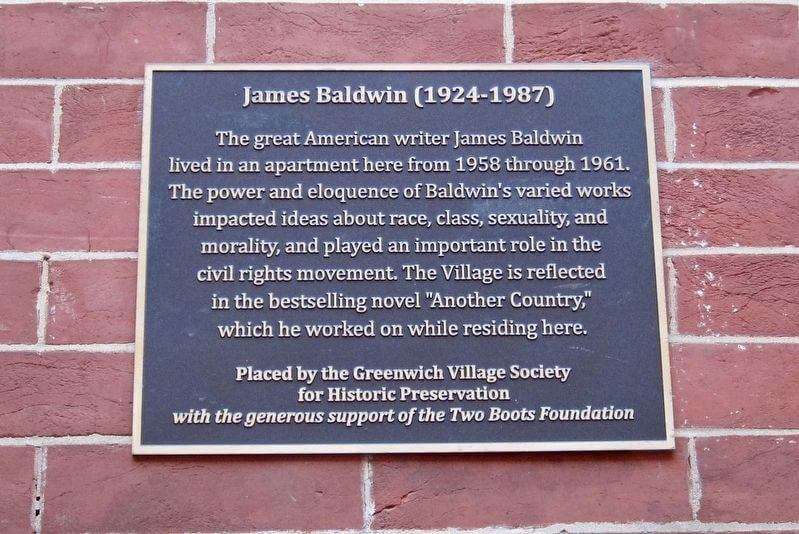
ConclusionJames Baldwin was an excellent writer whose life was full of pain and suffering, even though he garnered the world with his outstanding literary works. He wrote for his fellow African-Americans and his LGBTQ community and stood on many issues firmly. He was awarded Eugene F. Saxon Memorial Trust Award, Foreign Drama Critics Award, George Polk Memorial Award, etc. These all are evidence of his marvellous writing skill and thoughts.
Next TopicAryan Khan
|
 For Videos Join Our Youtube Channel: Join Now
For Videos Join Our Youtube Channel: Join Now
Feedback
- Send your Feedback to [email protected]
Help Others, Please Share










